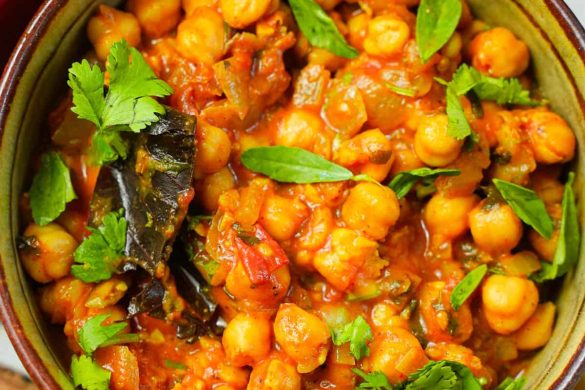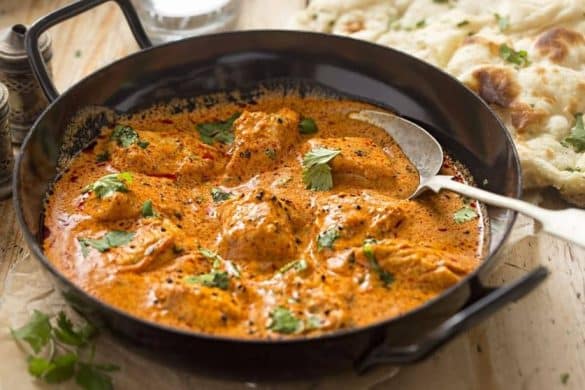Kathirikai Pitlai is a delightful South Indian dish that beautifully blends tender brinjal with the tangy taste of tamarind and a medley of spices. This wholesome curry, enriched with toor dal and black channa, offers a rich, flavorful experience that’s perfect for pairing with rice or chapati. Kathirikai Pitlai is a comforting dish that brings warmth and satisfaction with every bite.
About the Recipe
Kathirikai Pitlai is more than just a curry; it celebrates South Indian flavours. The dish starts with cooking toor dal and black channa to create a hearty base. The star ingredient, brinjal, is then simmered in a tangy tamarind extract, absorbing its distinct sourness. The magic lies in the freshly ground spice mix, made from chana dal, coriander seeds, red chillies, and coconut, which adds a rich, aromatic flavour. Finally, the dish is tempered with mustard seeds, curry leaves, fenugreek, and asafoetida, infusing it with fragrance. This recipe is delicious and packed with nutrients, making it a perfect addition to your meal rotation.
Why You Will Love This Recipe
You’ll love Kathirikai Pitlai for its unique blend of flavours and textures. The tender brinjal soaks up the tangy tamarind and aromatic spices, creating a hearty and comforting dish. The simplicity of the cooking process, combined with the rich, complex flavours, makes it a standout recipe in any kitchen. Whether you’re a seasoned cook or a beginner, this dish will impress with its delightful taste and satisfying, wholesome appeal.

Kathirikai Pitlai
Cooking Tips
To get the best results with Kathirikai Pitlai:
- Ensure you cook the toor dal until it’s soft and mushy for a creamy texture.
- Fry the spices lightly to bring out their aromas before grinding.
- When adding the tamarind extract, adjust the sourness to your preference.
Lastly, deep fry the pappads until crisp and add them just before serving for a delightful crunch.
Cultural Context
Kathirikai Pitlai hails from Tamil Nadu, a state in southern India known for its rich culinary heritage. This dish is often prepared during festivals and special occasions, reflecting its cultural significance. Traditionally served with rice, it embodies the essence of South Indian cuisine with its use of local spices and ingredients.
Serving and Storing Suggestions
Kathirikai Pitlai serves four and is best enjoyed with steamed rice or chapati. The total cooking time is approximately 45 minutes, with 30 minutes of active preparation. Store any leftovers in an airtight container in the refrigerator for up to 3 days—reheat gently before serving to retain its flavours and texture.
Other Similar Recipes
- Sambar
- Rasam
- Vatha Kuzhambu
- Ennai Kathirikai
- Arachuvitta Kuzhambu
Nutrient Benefits
Brinjal is rich in fibre, vitamins, and minerals, while toor dal and black channa provide protein and essential nutrients. Tamarind is a good source of antioxidants and vitamins, contributing to overall health. This dish is delicious and nutritious, making it a wholesome addition to your diet.

Kathirikai Pitlai
Ingredients
- 1/2 cup Toor Dal
- Turmeric Powder (a pinch)
- 1/2 cup Black Channa / Black Eyed Beans (soaked in water)
- 250 gms Brinjal
- 4 Pappads
- Tamarind: Medium lemon-sized
- Salt (to taste)
- Oil (as required)
Grind to a powder:
- 1 tsp Chana Dal
- 2 tsp Coriander Seeds
- 6 Red Chillies
- 1/2 cup Grated Coconut
For Seasoning:
- Mustard Seeds (a few)
- Curry Leaves (a few)
- Fenugreek Seeds (a little)
- Asafoetida (as required)
Instructions
- Pressure cook the toor dal with a pinch of turmeric powder. Set aside.
- Cook the soaked black channa with salt until tender. Set aside.
- In some oil, fry coriander seeds, chana dal, and red chillies. Add grated coconut and fry until golden. Grind this mixture into a powder.
- Soak tamarind in 2 cups of water, extract the juice, and boil with salt.
- Clean and slit the brinjal into four pieces.
- Add the brinjal, cooked channa, and salt to the tamarind extract. Boil until the brinjal is tender.
- Add the ground spice powder and boil for a few more minutes.
- Add the cooked toor dal and bring the mixture to a boil.
- In a separate pan, heat oil and add mustard seeds, curry leaves, fenugreek seeds, and asafoetida. Pour this seasoning over the pitlai.
- Deep fry the pappads and add them to the hot pitlai before serving.
Sign up for our newsletter
Frequently Asked Questions
What can I serve with Kathirikai Pitlai?
Kathirikai Pitlai pairs wonderfully with steamed rice, making for a wholesome and filling meal. You can also serve it with chapati or dosa. A side of coconut chutney or a light salad complements the flavours nicely. For a traditional South Indian meal, you might include sambar, rasam, and a vegetable poriyal alongside.
Can I use other types of beans in this recipe?
Yes, you can substitute black channa with other beans like black-eyed peas, chickpeas, or even green moong dal. Just ensure they are soaked and cooked until tender before adding them to the recipe. Each type of bean will impart a slightly different texture and flavour, allowing you to customize the dish to your preference.
How do I store and reheat Kathirikai Pitlai?
Store any leftover Kathirikai Pitlai in an airtight container in the refrigerator for up to 3 days. To reheat, gently warm it on the stovetop over low heat until heated through. If the curry has thickened too much during storage, add a splash of water. Reheating in the microwave is also an option; cover the dish to retain moisture.
What are some variations of Kathirikai Pitlai?
You can customize Kathirikai Pitlai by adding different vegetables like drumsticks, potatoes, or even carrots. You can also adjust the spice levels by increasing or decreasing the number of red chillies. Some variations include adding a handful of fresh spinach for added nutrition and colour towards the end of cooking.
Is Kathirikai Pitlai suitable for a vegan diet?
Yes, Kathirikai Pitlai is naturally vegan as it contains no animal products. The dish relies on plant-based ingredients like brinjal, toor dal, black channa, and coconut, making it a nutritious and flavorful option for those following a vegan diet.









